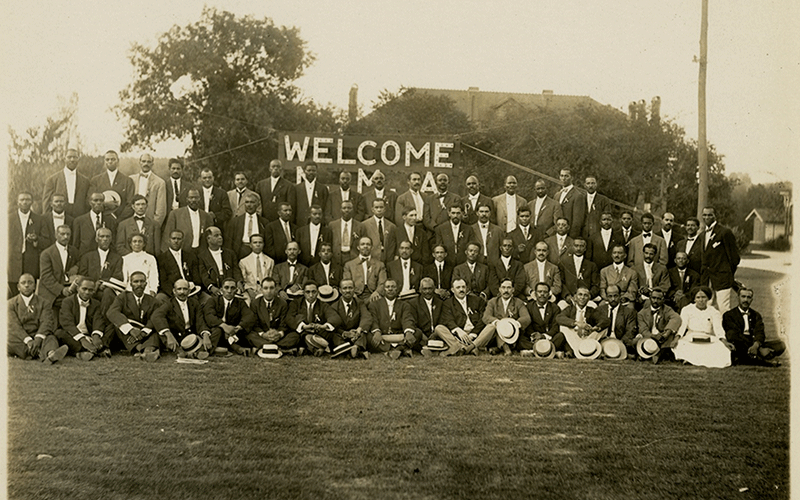RSNA’s ‘RadioGraphics’ Shines Light on Racial Disparities in Radiology
Article addresses historic discriminatory practices, highlights solutions



A new article published in RadioGraphics offers an in-depth look at racial disparities in access to diagnostic imaging as a consequence of longstanding structural racism in the U.S. and offers potential solutions to address barriers to care.
Current disparities in access to diagnostic imaging for Black patients and the underrepresentation of Black physicians among radiology trainees and practicing radiologists reflect contemporary consequences of a history of anti-Black discrimination in the U.S.
In the early 20th century, leaders and institutions throughout medicine and in the emerging field of radiology both actively instituted and passively accepted discrimination against minority professionals and patients. This early discrimination is intimately tied with health care disparities seen today.
“It is hard to hold a mirror to ourselves and our history and acknowledge the painful actions of the past and the inevitable consequences,” said the article’s senior author, Nicole M. Hindman, MD, associate chair of diversity and health equity at NYU Langone Health, New York. “But it is through this necessary self-reflection that we as humans, as doctors, as radiologists, and as society members can take responsibility for our actions and implement corrective change to move forward.”
In “How We Got Here: The Legacy of Anti-Black Discrimination in Radiology,” Dr. Hindman, Julia Goldberg, MD, MBA, at NYU Langone Health, and colleagues researched disparities in access to imaging and health care among Black patients. The article illustrates how understanding radiology’s history and resultant structural racism is a critical step in creating a path toward health equity for both patients and radiologists.
“Anti-Black discrimination and health care disparities are well documented in many medical specialties, but there has been limited research on this topic in radiology prior to recent years,” Dr. Goldberg said. “Our study is based on important research that has been done and continues to be investigated by other researchers, with a joint goal of addressing racial discrimination in the field of radiology.”
The authors explore anti-Black discrimination in medical education, medical research and health care provision, and delve into structural discrimination in early medical and radiological societies. They also highlight pioneering Black radiologists who overcame these obstacles to make important contributions to the specialty.
“In order to effectively oppose racial discrimination and to improve health care quality, our radiology community must understand the history of our field and how racism played a part in its early development,” Dr. Goldberg said. “In doing so, we will be better able to understand the racial disparities seen today in radiology-related health outcomes and in radiology workforce representation.”

Photograph of the National Medical Association Welcome Group, undated. (Image courtesy of Xavier University of Louisiana Archives and Special Collections, New Orleans, Louisiana.) https://doi.org/10.1148/rg.220112 @RSNA 2023
Acknowledging History Is Painful but Necessary
The impact of current health care disparities is most notable in cancer-related imaging. Black patients have up to a 42% higher mortality rate compared to white patients. In addition, structural barriers within radiology continue to affect workforce diversity and negatively impact marginalized groups. Black physicians are significantly underrepresented in the U.S. radiology workforce relative to their representation in the general population.
Potential solutions to these issues include instituting changes in education, identifying barriers to care, improving access, initiating community-based outreach, employing technology and artificial intelligence applications to mitigate bias, and developing anti-racist workplace policies and training.
“Acknowledging the discriminatory history of radiology and striving to improve diversity and health equity will ultimately work to improve patient outcomes,” the authors conclude.
In an accompanying editorial, “From Unacceptable to Intolerable,” RSNA Board member Jinel A. Scott, MD, MBA, notes that Dr. Goldberg and colleagues successfully link the current disparities in diagnostic imaging and underrepresentation of Black physicians in radiology to the historical practice of medical racism and systematic discrimination.
“Although acknowledging these historic events is painful and uncomfortable, to disregard them would be injurious to the specialty and directly harmful to Black physicians, radiologists and patients,” Dr. Scott says. “The article provides readers a thought-provoking framework for understanding the impact of institutionalized anti-Black racism in medicine and radiology that is imperative as communities, institutions and organizations attempt to combat health care disparities clearly evident in our society.”
RSNA’s strategic plan includes the crucial goal of promoting diverse representation within the profession and ensuring diversity in RSNA leadership. RSNA collaborates with other major radiology societies in the Radiology Health Equity Coalition to make a positive impact on health care equity in the radiology arena and beyond.
For More Information
Access the RadioGraphics article, “How We Got Here: The Legacy of Anti-Black Discrimination in Radiology.”
Learn more about RSNA’s commitment to diversity, equity and inclusion and about the Radiology Health Equity Coalition.
Read previous RSNA News stories about health care disparities:
- Multifactor Challenges Stymie Asian Women When It Comes to Breast Cancer Detection
- Study Finds Racial Disparities in Access to New Mammography Technology
- Radiology: Hear the Call to Action in Overcoming Health Care Disparities